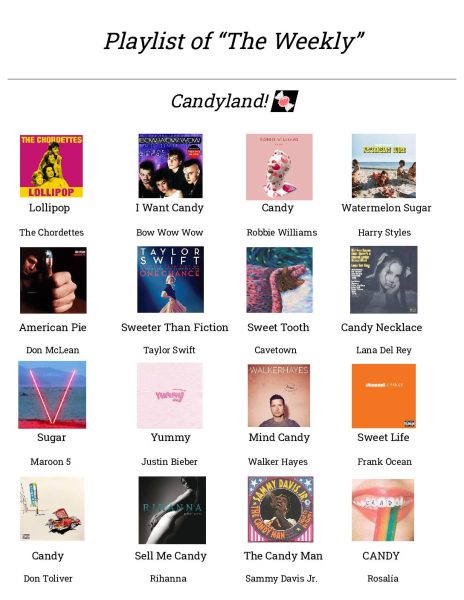My Visit To Nevermore Park
Among brick houses and train tracks, I spotted a sapphire blue building adorned with the letter “N.” I had finally arrived at Pilsen’s Nevermore Park: Hebru Brantley’s immersive art museum. Brantley is a Chicago artist who takes an Afro-futuristic approach to graffiti and street art. As I waited in line with my family, art-lovers and avid Instagram posters alike began to snake around the building, awaiting entrance. Upon entering, I was underwhelmed by the bland, white walls and thick silence of the lobby.
After passing through the lobby, I found myself in what felt like a typical art museum room. The white walls which led to high ceilings held framed pictures and paintings of Brantley’s classic character: a silhouette of a child’s face with round flight goggles. Sculptures of his character filled the empty floor space. My sense of being underwhelmed was not yet overcome.
Towards the end of the first room, I saw a flickering light, emitted by newspapers. As I walked closer to the light, I entered a cave lined with newspapers and magazines dating back to the early 1900s. The cave led to a bodega checkout counter complete with an array of old-fashioned Wrigley gum wrappers and political magazines. Beside the counter, Brantley placed box televisions displaying the fuzzy gray screen that appears when a channel won’t load. The disorder with which they were stacked on top of one another made me nervous the stack would tumble over any minute, but they nevertheless remained intact.
A brick doorway, colored rainbow by the hues of the nearby lights, welcomed me into the main room. I understood, at this point, what the Brantley immersion was all about. The panoramic view of the room encapsulated Chicago’s city life of constant chaos and diversity. The brick walls with graffiti and the neon lights scattered throughout the ground made me forget, for a second, that I was in a museum and not a junkyard. Through opposing sounds from different corners and various colored lights, I felt a part of the art. While I could see the installations, I could also walk through and hear them.
The intentional mismatched design of each installation felt truly representative of Chicago’s diverse neighborhoods. A giant sculpture of Brantley’s character, placed directly in the center of the main room, towered over me and caught my attention immediately. I walked past hanging chains and inside the hollow sculpture. Electronic music flooded out the sounds of other visitors, and I sat inside the sculpture watching the walls change colors in rhythm with the music.
Beside the center sculpture stood a treehouse with bike parts and street signs decorating the outside. Following the mismatch theme, random stuffed animals and Slinkys hung from the roof of the treehouse leaving just enough room for me to squeeze through underneath. The treehouse looked like an untidy shack––I guess this is Brantley’s take on modern art.
As I moved my way through the main room, I reached a hidden glass door covered with vines. The door was so difficult to spot that I was unaware of its existence until my brother asked me if I went to “the garden.” I was the only person in the rainforest-esque room when the sound of rain started playing. I was transported from the junkyard to a dark, fairytale garden. The only light in the room was that which shone through a single rainbow glass window near the door. Curious to see what else was hidden in the room, I found another door. This rigid, steel door did not match the delicate theme of the flowers throughout the room. As I opened it, I saw my reflection in front of me. I entered the mirror room. Foggy mirrors lined the walls, ceiling, and floor of the odd square room. There was no music, just silence.
The constant change of scenery between rooms made me forget where I was altogether. As I was leaving the museum, I exited through an old subway car where I felt like I was riding the train back home, not standing in a museum.
Nevermore Park initially struck me as an Instagram-hub. I expected to see people posing inside the exhibits. While I did walk past a few photoshoots, I felt much more part of the art than part of the community of people around me. I did not pay attention to others and lost myself in the sounds and lights of the individual rooms. I do not classify myself as an artsy person by any means, but I was able to really appreciate Brantley’s work. In just a half-hour, I walked through a traditional museum-style lobby only to reach a multitude of immersive, transporting rooms. Whether you’re a devoted Instagram poster, art connoisseur, or an average teen like me, Nevermore Park offers an experience for everyone.









